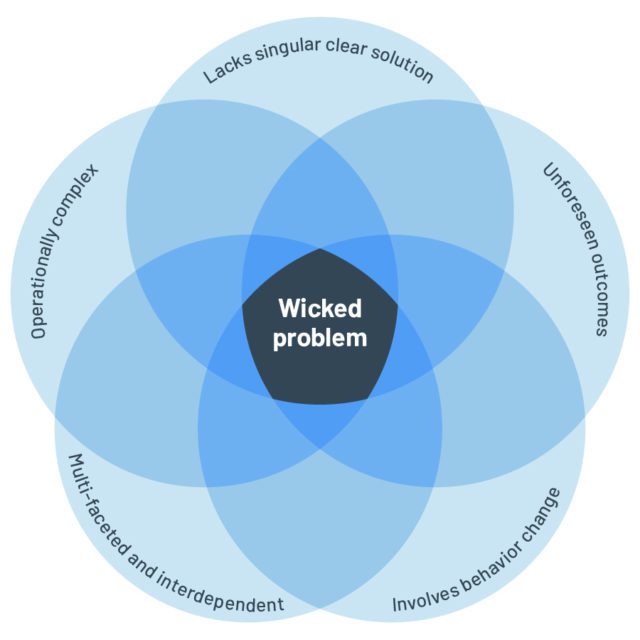How firms can develop better answers
In part 1 of this leadership series, I outlined the following business outcomes to help leadership teams in addressing the ‘wicked problem’ of continued success:

- Defining a ‘Go-To-Market’ Strategy
- Delivering Client Success
- Growing Revenue
- Increasing Profit
- Developing Talent
- Managing Risk
- Optimising the Partnership Structure
In this article, I explore the first outcome in greater detail, highlighting some of the challenges usually encountered, and the important questions that often remain unanswered. Although not intended to be an exhaustive list, or necessarily in a specific priority order, I have found that these topics often help leadership teams better frame their ongoing success.
Defining a ‘go-to-market’ strategy
A myriad of blogs, articles and books have been written on how organisations should approach defining overall business strategy. Indeed, large consulting firms dedicate entire teams to this very endeavour specifically for the professional services industry.
While external advisors are helpful for firms at certain times and in specific situations, I would venture that a return to basics is the best starting point for most firms. Leadership teams should ask themselves: is the whole firm aligned on who to target as clients, what services the firm is looking to provide, and why the clients will look to engage the firm as opposed to its competitors. However, before addressing these questions, leadership teams are best served by an honest self-assessment of the firm’s overall culture and approach to strategy development.

Setting a strategy: a question of culture
The culture within any firm is influenced by an array of differing elements, and it is a powerful force of which the best leaders have long since learned to be mindful. One of those core elements is how the firm reacts to the very way that the business strategy is determined and communicated across the firm. There is a broad spectrum of strategic models that, for professional services firms, is often defined by its extremities – centralised versus decentralised, leadership by a ‘benevolent dictator’ as opposed to a ‘collegial democracy,’ directed (or top down) rather than emergent (or bottom up).
With some notable exceptions, firms are rarely on either end of the spectrum, but normally reside somewhere between the two. Perhaps more interestingly, no one position is necessarily better than another. The market is full of examples of successful firms that have very different approaches to setting, communicating, and enacting their strategy. What all successful firms have in common, however, is that their leadership teams approach strategy development in complete alignment with an honest (and regularly revisited) understanding of the firm’s culture.
The Who – identifying target clients
Beginning with the basics of how the firm defines and regularly reviews its target client population, leadership teams should focus on entities that align with all of the three following questions:
- In which industries or sectors is the firm looking to operate?
- Which jurisdictions or geographies will the firm cover?
- What size of client is the firm best equipped to support?
From this sound foundation, firms can then overlay more detailed considerations such as key client programs, whitespace analysis, and data-driven DNA-mapping of their ideal clients. Whichever approach the leadership team adopts, the critical thing is to regularly review the firm’s client base against the agreed criteria (which itself should be considered and adapted over time).

The majority of firms will have somewhere between 60-80% of the firm’s total revenue accounted for by 20-40% of the firm’s clients. A consistent and robust review as detailed above will help firms to better manage that 60-80% ‘tail’ – some clients may no longer be suitable for the business and other clients will present opportunities for growth if the firm chooses to invest in those relationships.
The What – determining the firm’s services and products
At the highest level, this starts with the leadership team determining in which areas the firm will actively engage, ranging from a full-service offering down to the narrowest niche focus. As firms grow over time – via lateral hires, mergers, and/or organic development – the business can often branch into new areas away from the firm’s original core foundation. Quite often this will happen fortuitously as opportunities present themselves to the firm. However, I would suggest that leadership teams should often revisit their firm’s core strategy when making these ‘ad hoc’ decisions because tensions and fall out often occur when this ‘fit’ is not considered.
Within those areas, leaders should have a clear line of sight of the nature of the firm’s client offerings. Despite the nuances, there are often consistencies across the firm, and business services teams can be structured to maximise gains from synergies across departments. Aside from ensuring that any friction with other areas of the business is kept to the minimum, a holistic understanding of the firm’s offerings also enables leaders to identify innovation and growth opportunities.
Another element to consider, although arguably still nascent for many firms, is what (if any) products the firm can provide to the market. There are a number of areas, such as Real Estate and Employment, that lend themselves more than others towards the productisation of providing advice to clients. Technology almost always plays an important role in realising that potential, and the leading firms have harnessed the power of both internal and external technology research and development.
As markets become increasingly more competitive, and sophisticated clients continue to demand value-sensitive timely support, the future success of many firms will depend on how regularly leadership teams review opportunities to innovate in providing ‘products’ to their clients.

The Why – understanding how firms differentiate in a crowded marketplace
The global professional services industry is laden with hundreds of thousands of firms and, depending on which report you read and when, commands a total valuation of approximately $5 trillion. When the general globalisation of service consumption is also considered, it is no small wonder that genuine differentiation is one of the hardest challenges for leadership teams to solve.
As difficult as this crowded playing field may be, it is one of the most important elements that leaders should focus on because it drives the two most important success factors for a firm – how to develop and retain both the best talent and the best clients. To the critical eye, there are several firms in today’s market that are struggling to achieve true differentiation, and some of the recent merger activity could perhaps be seen as a last resort by the respective leadership teams to carve out their space.
There are a number of elements that leaders can, and should, consider in determining how the firm will differentiate itself, including: geographic footprint, industry expertise, adoption of technology, approach to pricing and service delivery, and so on. However, I would suggest that the first success factor mentioned above (securing the best talent) normally provides the answer for the second (securing the best clients). Talent is a firm’s number one differentiating factor, and the continued development and retention thereof should be a strategic priority that is regularly reviewed.
Next week, I will consider the importance of delivering client success in a firm’s long-term strategic approach. In the meantime, you can explore more inspiration and resources for leaders & partners, including our latest COVID-19 law firm research findings.